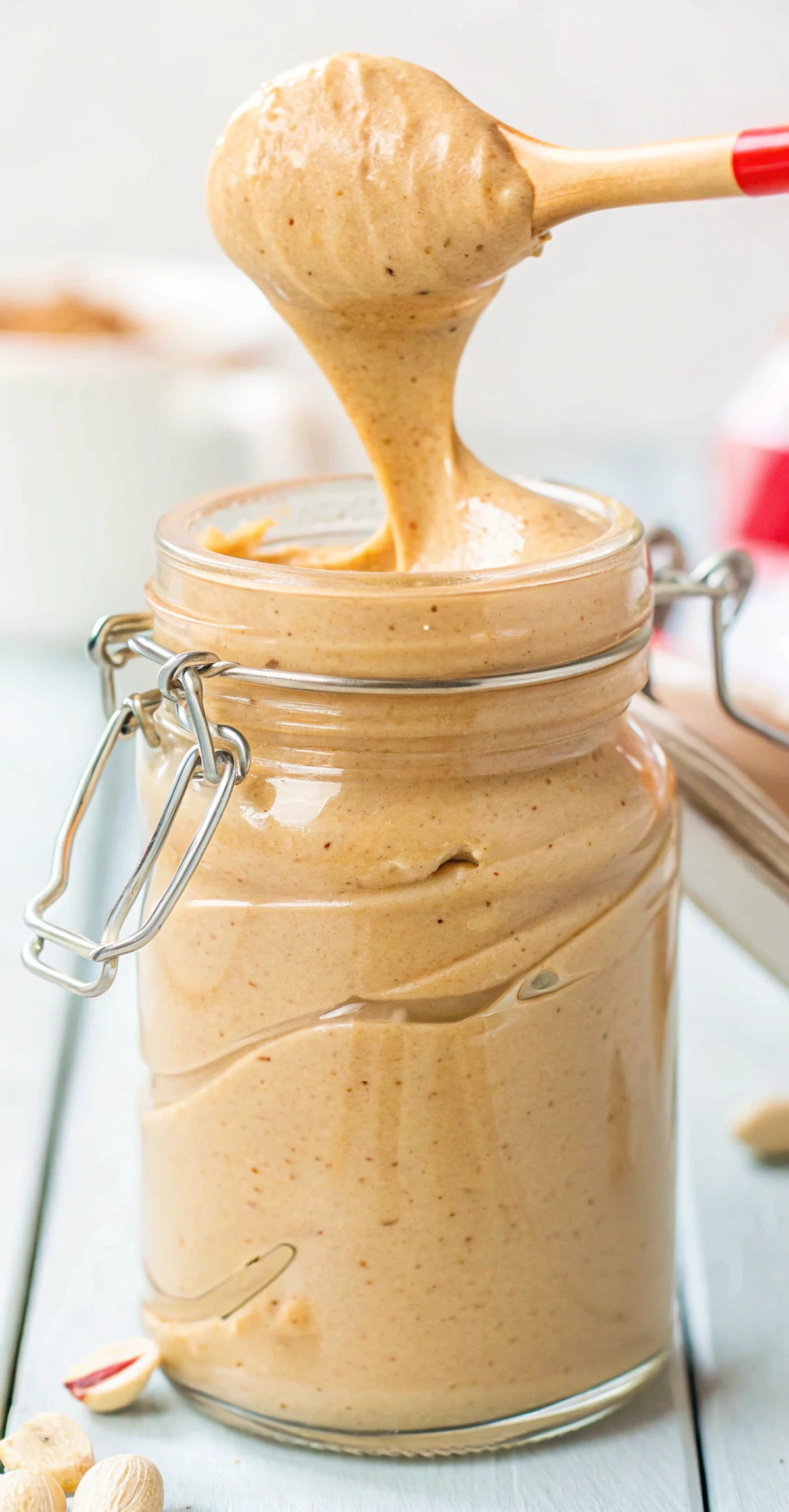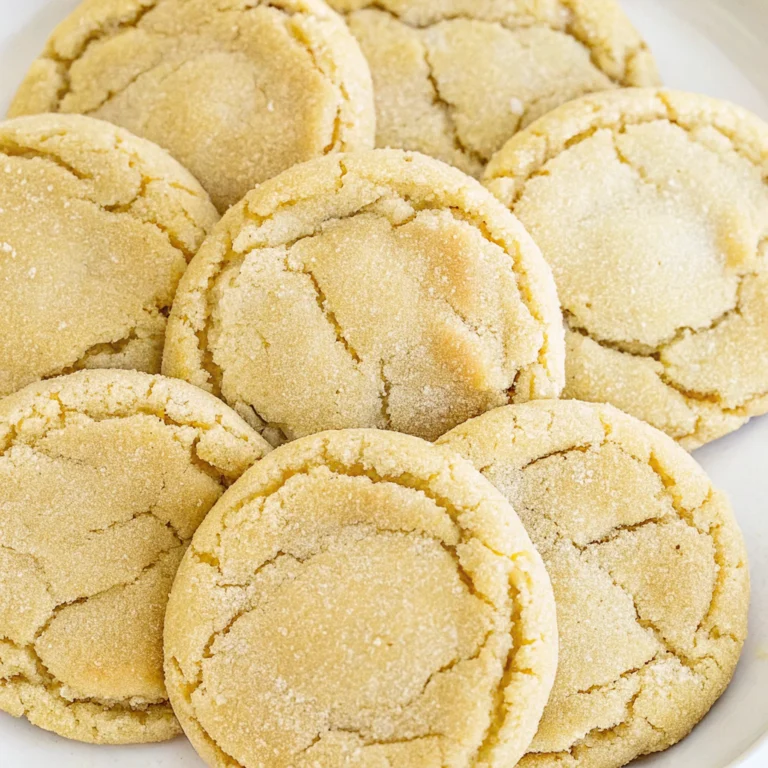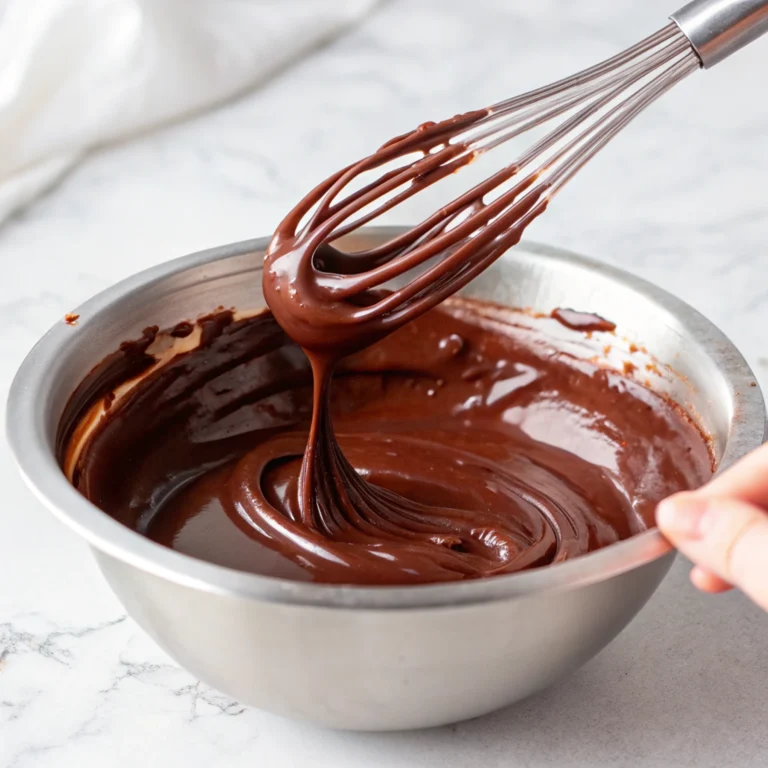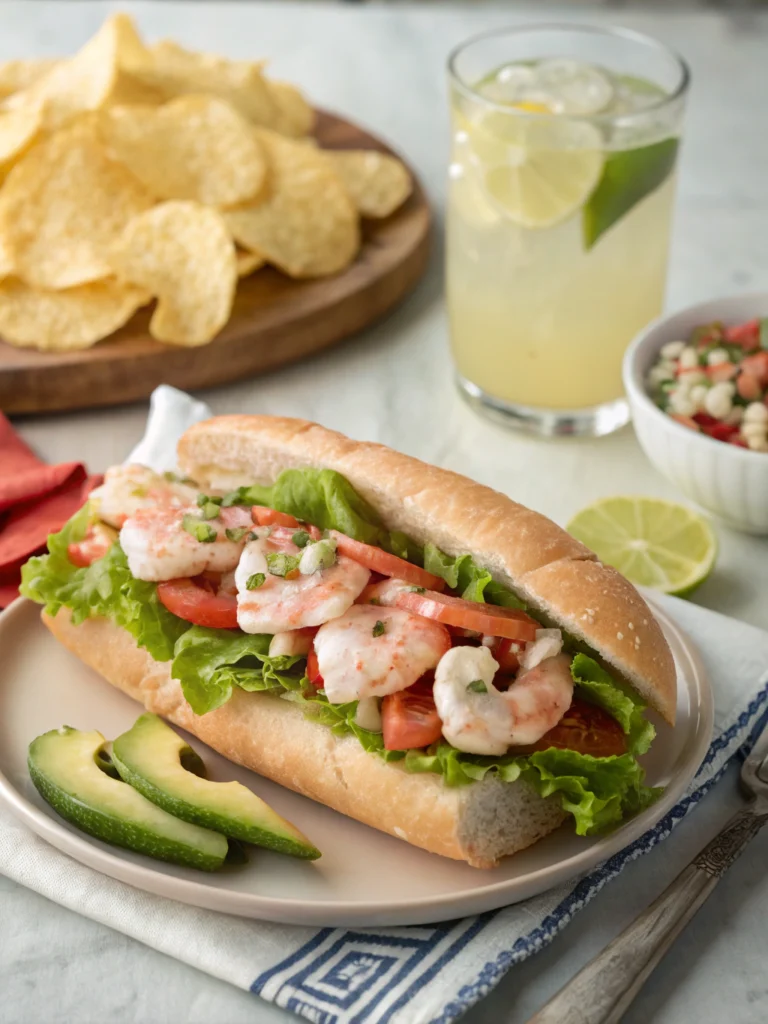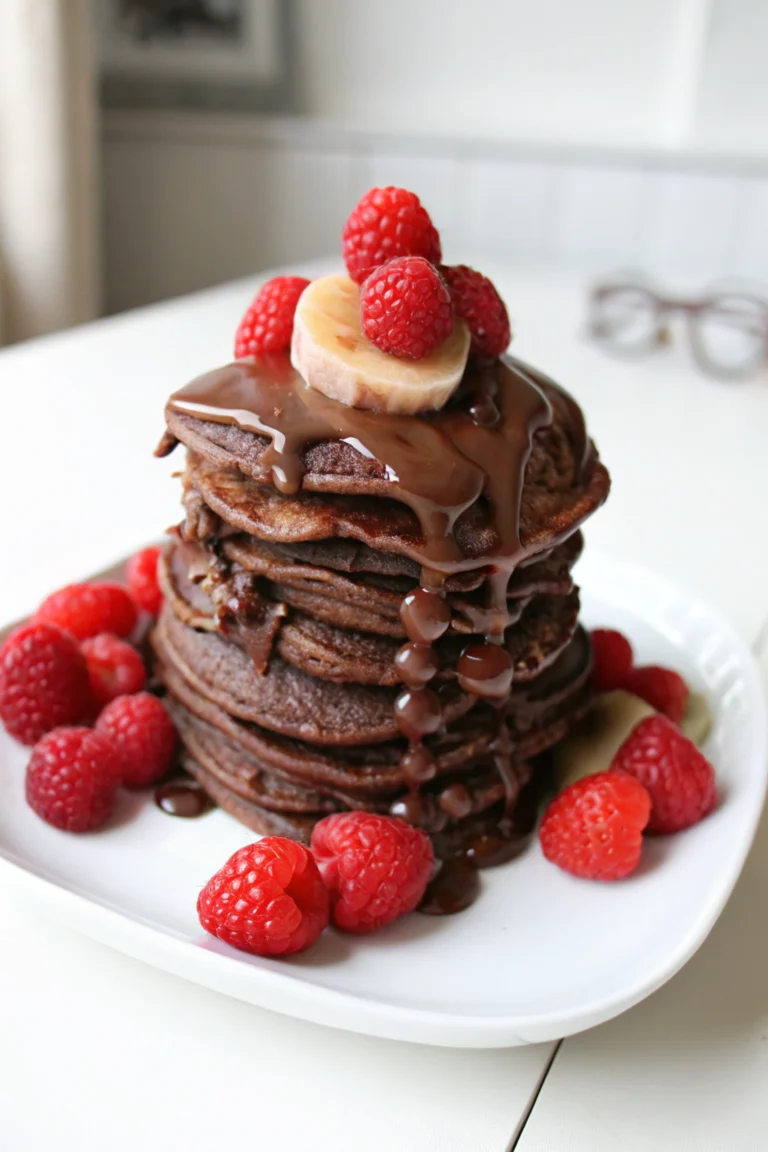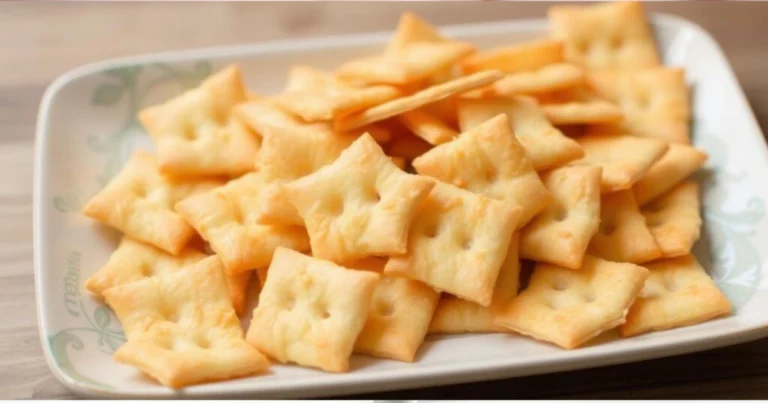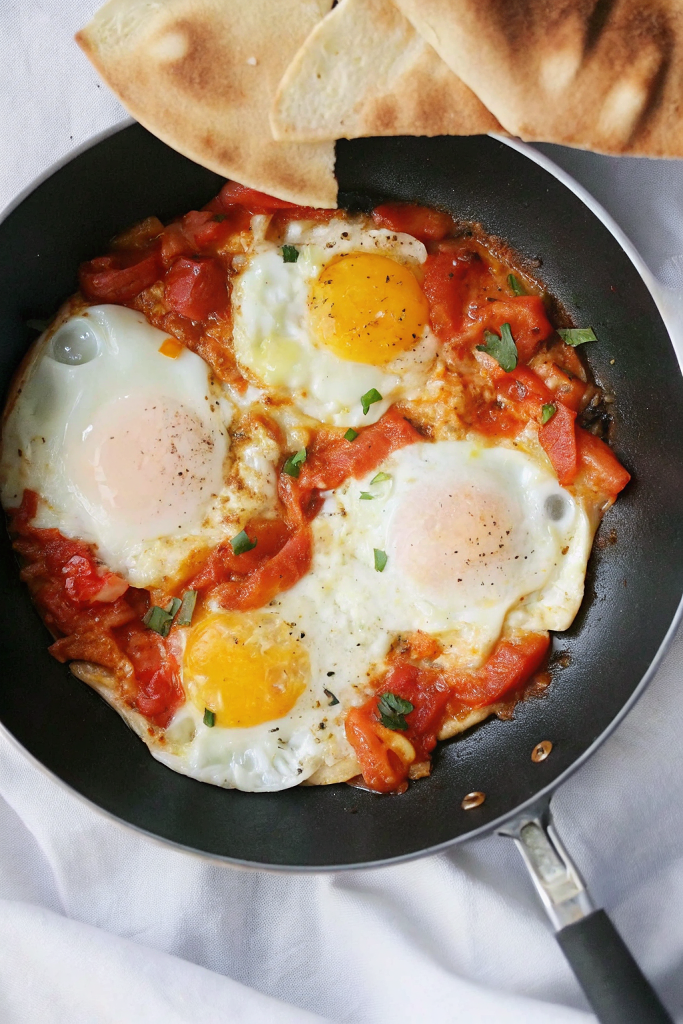Table of Contents
Why I’m Obsessed with Making My Own Peanut Butter (And Why You Will Be Too!)
There’s something magical about transforming simple roasted peanuts into a creamy, spreadable delight right in your own kitchen. I still remember the first time I made healthy homemade low-calorie peanut butter – that moment when my food processor finally turned those crunchy nuts into silky, drippy goodness felt like pure kitchen alchemy!
If you’re watching your calorie intake but refuse to give up one of life’s greatest pleasures (hello, peanut butter!), you’re in the right place. Store-bought varieties often contain unnecessary oils, sugars, and preservatives that can sabotage your health goals. But here’s the good news: making your own low calorie peanut butter for weight loss isn’t just possible – it’s surprisingly easy and infinitely customizable.
In this post, I’ll walk you through everything you need to know to create the perfect healthy homemade peanut butter that fits your nutritional needs without sacrificing that rich, nutty flavor we all crave. Let’s get spreading!
The Truth About Store-Bought Peanut Butter: What’s Really Inside
Before diving into our homemade version, let’s talk about why making your own healthy homemade low-calorie peanut butter makes so much sense.
Hidden Ingredients You Might Not Expect
Many commercial peanut butters contain more than just peanuts. Look at most labels and you’ll find added sugars (sometimes disguised as molasses or corn syrup), hydrogenated oils to prevent separation, salt, and preservatives. Even some “natural” versions include palm oil – which adds calories without adding nutritional value.
The Calorie Comparison
Traditional peanut butter packs about 190-200 calories per 2 tablespoon serving. While peanuts are naturally calorie-dense (they’re full of healthy fats, after all), certain additions in commercial versions can push that count even higher. When you make healthy peanut butter recipe for weight loss at home, you can control every ingredient, potentially saving 20-50 calories per serving.
Nutritional Benefits of Pure Peanut Butter
Despite being calorie-dense, pure peanut butter offers impressive nutritional benefits:
- Rich in heart-healthy monounsaturated fats
- Good source of plant-based protein (about 7-8g per serving)
- Contains fiber, magnesium, potassium, and vitamin E
- Provides antioxidants like resveratrol
The key is enjoying these benefits without unnecessary additives – exactly what we’ll accomplish with our healthy homemade low-calorie peanut butter!
Essential Equipment for Perfect Homemade Peanut Butter
Before we start blending our way to peanut butter bliss, let’s make sure you have the right tools for the job:
Food Processor vs. Blender: Which Works Better?
I’ve tested both, and while high-powered blenders (like Vitamix or Blendtec) can work, a food processor is my go-to for healthy homemade peanut butter. Food processors create less friction heat and provide more consistent results. The wider container also makes scraping down the sides easier.
If you only have a blender, look for:
- A tamper tool to push ingredients down
- Multiple speed settings
- The ability to handle thick mixtures
Must-Have Tools for Peanut Butter Success
- A good quality food processor (at least 7-cup capacity)
- Rubber spatula for scraping down sides
- Measuring cups
- Glass jars for storage
- Labels (trust me, you’ll make multiple flavors once you start!)
Having these ready will make your low calorie peanut butter for weight loss journey smooth and enjoyable.
The Perfect Base: Choosing the Right Peanuts
The foundation of exceptional healthy homemade low-calorie peanut butter is, of course, quality peanuts.
Raw vs. Roasted: Which Makes Better Peanut Butter?
While raw peanuts work, roasted peanuts deliver that deep, classic peanut butter flavor we all love. The roasting process develops the oils and flavors, making your butter more aromatic and flavorful without adding calories.
You have three options:
- Buy pre-roasted unsalted peanuts – Convenient and consistent
- Buy raw and roast yourself – Maximum freshness and control
- Use dry-roasted peanuts – Lowest calorie option as they contain less oil than oil-roasted varieties
Skinned vs. Unskinned: Does It Matter?
Removing the reddish-brown skins reduces slight bitterness and creates a smoother final product. However, those skins contain antioxidants and fiber. For the smoothest healthy peanut butter recipe for weight loss, use skinned peanuts. For maximum nutrition, keep the skins on.
Where to Find the Best Peanuts
- Natural food stores often sell peanuts in bulk bins
- Farmer’s markets for ultra-fresh options
- Online retailers for specialty varieties
- Grocery stores (check both the baking aisle and snack sections)
Basic Healthy Homemade Low-Calorie Peanut Butter Recipe
Now for the moment you’ve been waiting for – let’s make our own healthy homemade low-calorie peanut butter!
Ingredients
- 2 cups unsalted dry-roasted peanuts (approximately 300g)
- ¼ teaspoon sea salt (optional, adjust to taste)
- 1-2 teaspoons monk fruit sweetener or stevia (optional for sweetness without calories)
Step-by-Step Instructions
Add peanuts to your food processor: Pour your roasted peanuts into the food processor bowl. If you’re roasting them yourself, let them cool for about 10 minutes first.
Begin processing: Secure the lid and start processing on low speed, gradually increasing to high. This is where patience comes in!
Watch the magic happen: You’ll notice distinct stages as you process:
- First stage (1-2 minutes): The peanuts become a coarse meal
- Second stage (2-4 minutes): The meal clumps together into a dry ball
- Third stage (4-5 minutes): The oils release and it starts looking like thick peanut butter
- Final stage (5-8 minutes): The mixture becomes smooth and creamy
Add your customizations: Once you have a smooth base, add salt and any optional sweeteners. Process for another 30 seconds to incorporate.
Test and adjust: Stop to taste your healthy homemade peanut butter and adjust seasonings as needed. Remember, the flavor will develop further as it sits.
Transfer to storage: Spoon your fresh peanut butter into clean glass jars. I love watching that velvety stream pour into the container – one of the most satisfying kitchen moments ever!
Your low calorie peanut butter for weight loss will keep at room temperature for about 2 weeks, or in the refrigerator for up to 3 months.
Lower-Calorie Variations That Actually Taste Amazing
One of the joys of making healthy homemade low-calorie peanut butter is experimenting with variations that can reduce calories while maintaining deliciousness!
Peanut Butter Powder Blend (Ultra Low-Cal Option)
For the most dramatic calorie reduction:
- 1 cup homemade peanut butter
- ½ cup PB2 or other peanut butter powder
- 1-2 tablespoons water
Process together for a lighter spread that still delivers authentic flavor. This hybrid approach can reduce calories by up to 30% while maintaining a creamy texture.
Peanut-Pumpkin Butter
This fall-inspired variation adds nutrition while reducing calories:
- 1½ cups roasted peanuts
- ½ cup pureed pumpkin (unsweetened)
- 1 teaspoon pumpkin pie spice
- Monk fruit sweetener to taste
The pumpkin adds volume and moisture with minimal calories, creating a seasonal healthy peanut butter recipe for weight loss that’s perfect on morning toast.
Protein-Boosted Peanut Butter
Increase the protein-to-calorie ratio with:
- 2 cups roasted peanuts
- 2-3 tablespoons unflavored or vanilla protein powder
- Tiny splash of unsweetened almond milk to maintain creaminess
This version gives you more protein per tablespoon, making your healthy homemade low-calorie peanut butter even more satisfying and hunger-taming.
Flavor Boosters That Don’t Add Calories
You can customize your healthy homemade peanut butter with these zero or low-calorie additions:
Spice It Up
- Cinnamon (½-1 teaspoon): Adds warmth and may help stabilize blood sugar
- Vanilla extract (½ teaspoon): Creates a cookie-like flavor profile
- Cocoa powder (1-2 tablespoons): For chocolate lovers without added sugar
- Coffee extract (¼ teaspoon): Deepens flavor with a subtle mocha note
- Pumpkin pie spice (½ teaspoon): Perfect for fall vibes
Savory Twists
- Smoked paprika (¼ teaspoon): Creates a surprisingly complex flavor profile
- Curry powder (¼ teaspoon): Exotic and perfect for savory applications
- Garlic powder (⅛ teaspoon): Great for savory dips and dressings
- Chili flakes (pinch to ¼ teaspoon): For spicy food enthusiasts
These additions transform basic low calorie peanut butter for weight loss into gourmet spreads without adding significant calories.
Storage Tips to Maintain Freshness
Proper storage ensures your healthy homemade low-calorie peanut butter stays fresh and delicious.
Container Choices Matter
Glass jars with tight-fitting lids work best. Plastic containers can absorb oils and flavors over time, affecting taste and freshness.
The Refrigerator Debate
Natural peanut butter doesn’t contain stabilizers, so oil separation is normal. You have two options:
- Room temperature storage: Keeps it softer and easier to spread but shortens shelf life to about 2 weeks. Stir before each use.
- Refrigerator storage: Extends shelf life to 3+ months but firms the texture. Let sit at room temperature for 10-15 minutes before using.
Preventing Oil Separation
If oil separation bothers you, try:
- Storing the jar upside down in the fridge
- Adding 1 teaspoon of coconut oil to the recipe (adds minimal calories but helps stabilization)
- Stirring thoroughly before refrigerating
Creative Ways to Enjoy Your Healthy Peanut Butter
Now that you’ve made this amazing healthy homemade low-calorie peanut butter, let’s explore delicious ways to enjoy it beyond the classic PB&J!
Breakfast Ideas
- Swirl into overnight oats for protein-packed mornings
- Blend into smoothies (1 tablespoon adds creaminess without too many calories)
- Drizzle over whole grain waffles with fresh berries
- Mix into plain Greek yogurt with a touch of honey
Snack Inspirations
- Spread on apple or banana slices
- Use as a dip for celery sticks
- Mix with a little Greek yogurt for a protein-rich fruit dip
- Spread thinly on rice cakes topped with sliced strawberries
Savory Applications
Your healthy peanut butter recipe for weight loss works beautifully in savory dishes too:
- Whisk with soy sauce, lime, and chili for an easy Thai-inspired sauce
- Add to pureed soups for creaminess and protein
- Mix into hummus for a flavor twist
- Use as a base for salad dressings with vinegar and herbs
Troubleshooting Your Homemade Peanut Butter
Even experienced peanut butter makers encounter issues sometimes. Here’s how to solve common problems with your healthy homemade low-calorie peanut butter:
“My Peanut Butter Is Too Dry”
This usually happens when:
- Your food processor isn’t powerful enough
- You haven’t processed long enough
- The peanuts are old and have lost some oils
Solutions:
- Process longer – sometimes it takes patience!
- Add 1-2 teaspoons of a neutral oil like avocado oil
- Try adding 1-2 tablespoons of hot water while processing
“My Peanut Butter Is Too Runny”
If your low calorie peanut butter for weight loss is thinner than you’d like:
- Refrigerate it – cold temperatures will firm it up
- Add PB2 powder to absorb excess oil
- Add more peanuts and process briefly
“My Peanut Butter Tastes Bitter”
This could be due to:
- Peanut skins not removed
- Peanuts that were roasted too long
- Older peanuts that have begun to turn
Solutions:
- Add a natural sweetener like monk fruit
- Incorporate a pinch more salt
- Add a teaspoon of cinnamon or vanilla to mask bitterness
The Nutritional Edge of Homemade Peanut Butter
Let’s compare the nutritional profile of our healthy homemade low-calorie peanut butter with store-bought versions:
Calories and Macros Comparison
| Type of Peanut Butter | Calories (2 Tbsp) | Fat (g) | Carbs (g) | Protein (g) | Sugar (g) |
|---|---|---|---|---|---|
| Store-bought regular | 190-200 | 16-17 | 6-7 | 7-8 | 2-3 |
| Store-bought “natural” | 180-190 | 16 | 6 | 8 | 1-2 |
| Our basic homemade | 170-180 | 14-15 | 6 | 8 | 1 |
| Our ultra low-cal version | 130-140 | 10-11 | 6 | 7 | 1 |
As you can see, our healthy peanut butter recipe for weight loss can save you 20-50 calories per serving, which adds up over time!
Weight Loss Benefits Beyond Calories
When incorporated mindfully, healthy homemade low-calorie peanut butter can actually support weight loss by:
- Providing satisfying protein and healthy fats that reduce overall hunger
- Stabilizing blood sugar when paired with fiber-rich foods
- Offering a satisfying alternative to more processed treats
- Adding flavor to simple, clean meals
The key is portion control – measure your tablespoons rather than eyeballing them!
Frequently Asked Questions
Can I make healthy peanut butter without a food processor?
While a food processor is ideal, you can use a high-powered blender with a tamper. It’s more challenging and requires stopping frequently to scrape down the sides, but it’s possible. Bullet-type blenders typically don’t work well for healthy homemade low-calorie peanut butter as they lack the power for extended processing.
How can I make my peanut butter even lower in calories?
The peanut-powder blend mentioned earlier is your best bet. You can also try incorporating air by whipping your finished peanut butter with 1-2 tablespoons of unsweetened almond milk. This creates a fluffier texture that naturally encourages using less per serving.
Is homemade peanut butter actually healthier than store-bought?
Yes, because you control every ingredient. Store-bought versions often contain added sugars, oils, and preservatives. Your healthy homemade low-calorie peanut butter contains only what you choose to add, making it cleaner and potentially lower in calories.
Why does my homemade peanut butter separate, and how can I prevent it?
Separation happens because natural peanut butter doesn’t contain stabilizers like hydrogenated oils. You can minimize separation by thoroughly processing until very smooth, storing in the refrigerator, and adding a small amount (1 teaspoon) of coconut oil to help bind the mixture.
How long will my homemade peanut butter last?
Your low calorie peanut butter for weight loss will stay fresh for about 2 weeks at room temperature or 3+ months in the refrigerator. Signs it has gone bad include a rancid smell, off taste, or visible mold.
Can I use this recipe for other nut butters?
Absolutely! The same process works for almonds, cashews, pecans, and more. Just note that different nuts have different oil contents, so processing times may vary. Almonds typically make a slightly lower-calorie butter than peanuts.
Let’s Share Our Peanut Butter Adventures!
Now that you’re equipped with everything you need to make amazing healthy homemade low-calorie peanut butter, I’d love to hear about your creations! Have you tried any of the variations? Created your own unique flavor? Found a perfect food pairing?
Drop a comment below sharing your experience or ask any questions you might have. I check comments regularly and love connecting with fellow peanut butter enthusiasts!
If you enjoyed this recipe, please consider sharing it with friends who are also looking for healthy peanut butter recipes for weight loss – sometimes the simplest kitchen projects are the most satisfying to share.
Until next time, happy blending and spreading!
Hungry for more? Check out our top rated recipes :
- Healthy Carrot Cake: Easy Recipe for Guilt-Free Indulgence
- Mango Banana Smoothie: The Easy Recipe for a Tropical Delight
- Carrot Ribbons Recipe:A Safe Journey to Your Dream Body
- What Happens to Your Body When You Combine Beetroot Juice and Chia Seeds Trend In 2025
- How to Make Irresistible Chocolate Covered Potato Chips at Home

